Estonian Academy of Arts
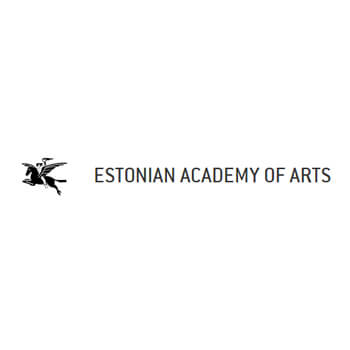
Founded: 1914
Address: Estonia pst 7 / Teatri väljak 1 - Tallinn, Estonia
Phone: +372 626 7301
Address: Estonia pst 7 / Teatri väljak 1 - Tallinn, Estonia
Phone: +372 626 7301
Here you find out Estonian Academy of Arts complete information about fees, location, degree Estonian Academy of Arts offers, number, website, and much more. Estonian Academy of Arts is a leading university in Tallinn - Estonia.
You can also find out jobs at Estonian Academy of Arts for students, teachers, and professors. We also update the database for an internship at Estonian Academy of Arts for students.
Established in 1914, the Estonian Academy of Arts is the only public university in Estonia providing higher education in fine arts, design, architecture, media, visual studies, art culture, and conservation.
The EAA is striving to be among the leading international centres of innovation in the field of visual culture. Currently there are more than 1 000 students enrolled in the Academy, ...with many participating in exchange programmes at international partner universities. In addition to active study and research activities, the Estonian Academy of Arts also offers lifelong learning opportunities through the Open Academy.
The Estonian Academy of Arts collaborates with more than a hundred top art, design, and architecture universities worldwide and belongs to several international higher education networks.
The lecturers and instructors are professionals in their field — internationally recognised artists, architects, designers, historians, and scientists. Visiting lecturers from universities in Estonia and abroad are regular guests.
The Estonian Academy of Arts has a rich academic library that is constantly expanding its collection, a newly renovated joint dormitory with the Estonian Music and Theatre Academy, and practicum facilities at Tamse in Muhumaa and Heimtal in Viljandimaa. Departments of the EAA regularly organise student, faculty, and departmental exhibitions and open lectures in various locations in Tallinn and elsewhere.
The EAA actively publishes different types of publications, including faculty members’ books, textbooks, study materials, collections of articles, and advance reviewed works from the fields of art and research.
While offering a wide selection of specialities, the Academy also offers unique, individualised study and personal mentorship by members of the faculty. The departments are strong bodies of competence on their own, while at the same time facilitating synergy and interdisciplinary studies. Many faculties have been operating for close to a century. They have lengthy experience and historical continuity, and also pioneer change in their field.
The Academy welcomes motivated people who are visually and socially sensitive and want to develop their thinking abilities, opportunities, and potential as creative people. The goal of the Academy is for graduates to be able to function successfully in society and work as independent creators and thinkers. That is why the curricula are formed in such a way as to develop the analytical ability and critical thinking of students. Every programme includes philosophy, history of art, aesthetics, and foreign languages.
The aim of the Academy is to be in the midst of life happening. That is why attention is paid to society and the professional world in broad terms.
EAA has close ties and cooperation agreements with more than 100 international universities and many international networks, through which student and faculty exchanges can be negotiated and internship opportunities can be expanded. EAA is a member of CUMULUS (International Association of Universities and Colleges of Art, Design and Media); EAAE (European Association for Architectural Education) and through NORDPLUS is a member of many professional networks.
Since 1999 EAA has been a member of The European Commission’s Lifelong Learning Programme for Higher Education, Erasmus, under which more than 100 bilateral exchange agreements have been signed. In addition to the Erasmus programme, the Estonian Academy of Arts has entered into student and faculty exchange and cooperation contracts with ten internationally recognised art universities outside of the European Union.
Regular and intense contacts are maintained with the world outside academia through exhibitions and publishing work, through organising many events, and in cooperation with businesses and public institutions.
International relations, faculty and student exchanges, advice on international internship opportunities, and grant information are coordinated by the International Relations Office.
The EAA collaborates with universities, cultural institutions, artistic associations, local government bodies, and businesses in Estonia and abroad.
The Estonian Academy of Arts cooperates with many Estonian and international businesses in the field of science and development. The partners vary depending on the area of specialisation, and the Academy is able to offer a range of services from research and analysis to creating prototypes.
The Department of Development is the link between education and business. The services and solutions supporting EAA’s main activities are worked out, giving legal and entrepreneurial advice to staff and businesses for carrying out collaborative projects with the Academy’s departments. The Department of Research and Development interacts actively with businesses in Estonia and abroad and carries out joint projects. Many students complete design tasks for Estonian companies in the public and private sectors and take part in international and local competitions during their studies.
The Department of R&D organises training in the fields of entrepreneurship, intellectual property rights, career planning, internships, and project management. Students are advised in making business plans, and there are numerous resources available to EAA’s spin-off businesses. The department coordinates interdepartmental development projects and carries out research and development projects. The Department of Research and Development manages EAA’s local and international co-sponsored or joint projects.
A business and career website for the members of the Estonian Academy of Arts offers information, materials, references relating to topics on intellectual property, business, career, apprenticeship, and project management.
The Estonian Academy of Arts is the main educator and developer of the arts, design, architecture, art history, heritage and arts education professionals in Estonia; the promoter and introducer of visual culture and an important driver of the Estonian society. The teaching provided by EAA is modern and interdisciplinary, creative and exploratory.
Through our alumni, faculty and students, we are the central Estonian and significant international creator, designer and interpreter of art, visual culture and living environment; and the essential enriching actor of the cultural environment and quality of life.
Right from the start, the Estonian Art Society’s Tallinn School of Arts and Crafts received substantial support from the city of Tallinn, and the school was transferred to the city in 1916. It became a state educational institution in 1920, although the word ‘Tallinn’ in its name was not deleted until 1924 when it became the State School of Arts and Crafts, which was the best known of the names of this institution of secondary vocational education.
Both the graphic art courses and school of arts and crafts operated at the Canute Guild Hall on Pikk Street in Tallinn. In the 1920s, the Tallinn College of Engineering was also located in the Canute Guild Hall, where architecture was also taught. In 2009, the EKA Department of Architecture and Urban Design moved there and initially so did the Department of Heritage Studies and Conservation, which meant that the architecture students had come full circle and returned to the space once occupied by their predecessors. When the Tsarist state ceased to exist, the State Secondary School for Girls was closed and the School of Arts and Crafts took possession of its two-story stone building on Tartu Road. The school remained in that building, which was repeatedly expanded, until 2010.
The instruction at the School of Arts and Crafts was originally in Russian, and was not switched to Estonian until independence was declared in 1918. Initially, students with a primary school education that were at least 12 years old were admitted. In 1918, the age limit was raised to 16. Essentially, during the independence period, the School of Arts and Crafts operated as a six-year vocational secondary school with an art focus, where general subjects and art-related subjects were both taught. In the 1920s, the students who had completed the three-year elementary program were qualified as skilled workers and after completing the advanced program were qualified in drawing and technical drawing. In the 1930s, studies started with a two-year general stage, followed by a three-year workshop stage and a one-year master class. Then, the school started admitting more secondary school graduates, who were sent directly to the workshops. The graduates were able to acquire further qualifications as drawing and handicrafts teachers by attending the Tallinn Teachers’ Seminar.
For the first 20 years, until 1934, the school was headed by Voldemar Päts, the politician Konstantin Päts’s brother, who had studied at the Stieglitz Art School in St. Petersburg at the turn of the century. He diligently implemented the drawing- and stylisation-based study methods he had learned there at the Tallinn School of Arts and Crafts. Päts himself graduated the Stieglitz School inconspicuously and did not become an artist, but he had sufficient pedagogical and bureaucratic talent. The nucleus of the faculty at the Tallinn School of Arts and Crafts consisted of Alfred Kivi, Osvald Jungberg (Noormägi), August Kilgas, Hans Kuusik, and Georg Rogožkin. All of them had studied drawing at the Stieglitz School, and were now drawing teachers. The internal opposition was formed by Roman Nyman and Nikolai Triik (until 1921), who had also studied at the Stieglitz School, but were renowned artists. However, famous artists continued to be rebuffed, and for instance, in 1926, attempts were made to get rid of Kristjan and Paul Raud. Jaan Koort, who had studied at the Stieglitz School, but was a troublemaker, did not fit in at all – not in the 1920s or in the 1930s. Technical drawing was taught by Herman Reier, who was an engineer and later the director of the Tallinn College of Engineering, and Teodor Ussisoo, one of the first Estonians to be educated as an interior architect, who later headed up the State School of Industry.
While the general art subjects at the arts and crafts school were taught in the turn-of-the-century spirit of national romanticism and Mir iskusstva, and art history did not cover anything beyond the Renaissance, the school’s strengths were in the workshops that taught practical skills. There, in addition to diligent and precise craftspeople, a whole series of genuine applied artists were educated. The school’s graduates not only helped to design products for successful businesses in the 1930s, like Taska, Lorup, Tavast and Kodukäsitöö, but a whole series of Soviet-era Estonian industries, like Juveel, Tarbeklaas, Linda, ARS, Kommunaar, Estoplast, the furniture factories, etc. relied on their knowhow and efficiency.
Along with the poster- and sign-painting workshop, another important workshop was the one for decorative painting, which was headed for a long time by stage designer Roman Nyman. Together with his students, Nyman designed the interiors for the restaurant in the prestigious Tallinn Social Club on Aia Street, etc. In 1925, classes in oil painting were added, which were taught by August Jansen who had been educated at the St. Petersburg Academy of Arts.
The women’s handicraft department, which was originally called the needlework department (headed by Elfriede Paulberg, Helmi Koljo) and later called the embroidery speciality, was one of the most popular at the school. Since the school earned extra money by filling orders, the young women in this department were forever embroidering flags, Mari Adamson recalls.
In 1938, a four-year State School of Applied and Fine Arts and a three-year State Higher School of Art were established on the foundation of the School of Arts and Crafts. Together they constituted the State Art Schools. The use of such a grand name was possible because the Pallas as a private school belonged to the art society. The State Higher School of Art included departments of painting, sculpture and applied arts. By the time the independence period ended, the quality of the Tallinn school had improved, and the graduates included several famous post-war artists. The first graduates of the State Higher Art School received their diplomas in 1941 and they included Evald Okas, Alo Hoidre, Oskar Raunam and others.
A great change for the art school was the introduction of doctoral studies in 1995. Initially, mainly well-known scholars defended their doctoral theses as external students, because they wished to acquire ‘real’ PhD degrees in addition to their Soviet-era candidate degrees. The art history curriculum, introduced first, represented the traditional humanities; while the programmes of heritage studies and conservation, art and design, as well as architecture, are based on creative practices.
The Academy of Arts has never faced challenges as serious as today’s. The mission of the school is to defend visual culture in Estonia. Maybe the public battle against the artistically inferior Freedom Monument, the so-called ‘monument war’ of 2009, cost the school its new building, but there can be no compromise in the defence of these values. This is Academy of Arts’ qualified contribution to a knowledge-based Estonia. The neoliberal social order had marginalised not only art, but also architecture and design, not to mention eradicating art criticism. The creative economy has potential, but a mere business model cannot replace fundamental disciplines. The competition between the schools of higher education in Estonia and abroad has intensified. The attitude toward life of the dwindling number of young people is increasingly rational. Yet, an oasis for the idealistic remaking of the world must exist somewhere. In its new century, it will be exciting for the EKA to meet these and other, yet to arise, challenges.
You can also find out jobs at Estonian Academy of Arts for students, teachers, and professors. We also update the database for an internship at Estonian Academy of Arts for students.
Established in 1914, the Estonian Academy of Arts is the only public university in Estonia providing higher education in fine arts, design, architecture, media, visual studies, art culture, and conservation.
The EAA is striving to be among the leading international centres of innovation in the field of visual culture. Currently there are more than 1 000 students enrolled in the Academy, ...with many participating in exchange programmes at international partner universities. In addition to active study and research activities, the Estonian Academy of Arts also offers lifelong learning opportunities through the Open Academy.
The Estonian Academy of Arts collaborates with more than a hundred top art, design, and architecture universities worldwide and belongs to several international higher education networks.
The lecturers and instructors are professionals in their field — internationally recognised artists, architects, designers, historians, and scientists. Visiting lecturers from universities in Estonia and abroad are regular guests.
The Estonian Academy of Arts has a rich academic library that is constantly expanding its collection, a newly renovated joint dormitory with the Estonian Music and Theatre Academy, and practicum facilities at Tamse in Muhumaa and Heimtal in Viljandimaa. Departments of the EAA regularly organise student, faculty, and departmental exhibitions and open lectures in various locations in Tallinn and elsewhere.
The EAA actively publishes different types of publications, including faculty members’ books, textbooks, study materials, collections of articles, and advance reviewed works from the fields of art and research.
While offering a wide selection of specialities, the Academy also offers unique, individualised study and personal mentorship by members of the faculty. The departments are strong bodies of competence on their own, while at the same time facilitating synergy and interdisciplinary studies. Many faculties have been operating for close to a century. They have lengthy experience and historical continuity, and also pioneer change in their field.
The Academy welcomes motivated people who are visually and socially sensitive and want to develop their thinking abilities, opportunities, and potential as creative people. The goal of the Academy is for graduates to be able to function successfully in society and work as independent creators and thinkers. That is why the curricula are formed in such a way as to develop the analytical ability and critical thinking of students. Every programme includes philosophy, history of art, aesthetics, and foreign languages.
The aim of the Academy is to be in the midst of life happening. That is why attention is paid to society and the professional world in broad terms.
EAA has close ties and cooperation agreements with more than 100 international universities and many international networks, through which student and faculty exchanges can be negotiated and internship opportunities can be expanded. EAA is a member of CUMULUS (International Association of Universities and Colleges of Art, Design and Media); EAAE (European Association for Architectural Education) and through NORDPLUS is a member of many professional networks.
Since 1999 EAA has been a member of The European Commission’s Lifelong Learning Programme for Higher Education, Erasmus, under which more than 100 bilateral exchange agreements have been signed. In addition to the Erasmus programme, the Estonian Academy of Arts has entered into student and faculty exchange and cooperation contracts with ten internationally recognised art universities outside of the European Union.
Regular and intense contacts are maintained with the world outside academia through exhibitions and publishing work, through organising many events, and in cooperation with businesses and public institutions.
International relations, faculty and student exchanges, advice on international internship opportunities, and grant information are coordinated by the International Relations Office.
The EAA collaborates with universities, cultural institutions, artistic associations, local government bodies, and businesses in Estonia and abroad.
The Estonian Academy of Arts cooperates with many Estonian and international businesses in the field of science and development. The partners vary depending on the area of specialisation, and the Academy is able to offer a range of services from research and analysis to creating prototypes.
The Department of Development is the link between education and business. The services and solutions supporting EAA’s main activities are worked out, giving legal and entrepreneurial advice to staff and businesses for carrying out collaborative projects with the Academy’s departments. The Department of Research and Development interacts actively with businesses in Estonia and abroad and carries out joint projects. Many students complete design tasks for Estonian companies in the public and private sectors and take part in international and local competitions during their studies.
The Department of R&D organises training in the fields of entrepreneurship, intellectual property rights, career planning, internships, and project management. Students are advised in making business plans, and there are numerous resources available to EAA’s spin-off businesses. The department coordinates interdepartmental development projects and carries out research and development projects. The Department of Research and Development manages EAA’s local and international co-sponsored or joint projects.
A business and career website for the members of the Estonian Academy of Arts offers information, materials, references relating to topics on intellectual property, business, career, apprenticeship, and project management.
The Estonian Academy of Arts is the main educator and developer of the arts, design, architecture, art history, heritage and arts education professionals in Estonia; the promoter and introducer of visual culture and an important driver of the Estonian society. The teaching provided by EAA is modern and interdisciplinary, creative and exploratory.
Through our alumni, faculty and students, we are the central Estonian and significant international creator, designer and interpreter of art, visual culture and living environment; and the essential enriching actor of the cultural environment and quality of life.
Right from the start, the Estonian Art Society’s Tallinn School of Arts and Crafts received substantial support from the city of Tallinn, and the school was transferred to the city in 1916. It became a state educational institution in 1920, although the word ‘Tallinn’ in its name was not deleted until 1924 when it became the State School of Arts and Crafts, which was the best known of the names of this institution of secondary vocational education.
Both the graphic art courses and school of arts and crafts operated at the Canute Guild Hall on Pikk Street in Tallinn. In the 1920s, the Tallinn College of Engineering was also located in the Canute Guild Hall, where architecture was also taught. In 2009, the EKA Department of Architecture and Urban Design moved there and initially so did the Department of Heritage Studies and Conservation, which meant that the architecture students had come full circle and returned to the space once occupied by their predecessors. When the Tsarist state ceased to exist, the State Secondary School for Girls was closed and the School of Arts and Crafts took possession of its two-story stone building on Tartu Road. The school remained in that building, which was repeatedly expanded, until 2010.
The instruction at the School of Arts and Crafts was originally in Russian, and was not switched to Estonian until independence was declared in 1918. Initially, students with a primary school education that were at least 12 years old were admitted. In 1918, the age limit was raised to 16. Essentially, during the independence period, the School of Arts and Crafts operated as a six-year vocational secondary school with an art focus, where general subjects and art-related subjects were both taught. In the 1920s, the students who had completed the three-year elementary program were qualified as skilled workers and after completing the advanced program were qualified in drawing and technical drawing. In the 1930s, studies started with a two-year general stage, followed by a three-year workshop stage and a one-year master class. Then, the school started admitting more secondary school graduates, who were sent directly to the workshops. The graduates were able to acquire further qualifications as drawing and handicrafts teachers by attending the Tallinn Teachers’ Seminar.
For the first 20 years, until 1934, the school was headed by Voldemar Päts, the politician Konstantin Päts’s brother, who had studied at the Stieglitz Art School in St. Petersburg at the turn of the century. He diligently implemented the drawing- and stylisation-based study methods he had learned there at the Tallinn School of Arts and Crafts. Päts himself graduated the Stieglitz School inconspicuously and did not become an artist, but he had sufficient pedagogical and bureaucratic talent. The nucleus of the faculty at the Tallinn School of Arts and Crafts consisted of Alfred Kivi, Osvald Jungberg (Noormägi), August Kilgas, Hans Kuusik, and Georg Rogožkin. All of them had studied drawing at the Stieglitz School, and were now drawing teachers. The internal opposition was formed by Roman Nyman and Nikolai Triik (until 1921), who had also studied at the Stieglitz School, but were renowned artists. However, famous artists continued to be rebuffed, and for instance, in 1926, attempts were made to get rid of Kristjan and Paul Raud. Jaan Koort, who had studied at the Stieglitz School, but was a troublemaker, did not fit in at all – not in the 1920s or in the 1930s. Technical drawing was taught by Herman Reier, who was an engineer and later the director of the Tallinn College of Engineering, and Teodor Ussisoo, one of the first Estonians to be educated as an interior architect, who later headed up the State School of Industry.
While the general art subjects at the arts and crafts school were taught in the turn-of-the-century spirit of national romanticism and Mir iskusstva, and art history did not cover anything beyond the Renaissance, the school’s strengths were in the workshops that taught practical skills. There, in addition to diligent and precise craftspeople, a whole series of genuine applied artists were educated. The school’s graduates not only helped to design products for successful businesses in the 1930s, like Taska, Lorup, Tavast and Kodukäsitöö, but a whole series of Soviet-era Estonian industries, like Juveel, Tarbeklaas, Linda, ARS, Kommunaar, Estoplast, the furniture factories, etc. relied on their knowhow and efficiency.
Along with the poster- and sign-painting workshop, another important workshop was the one for decorative painting, which was headed for a long time by stage designer Roman Nyman. Together with his students, Nyman designed the interiors for the restaurant in the prestigious Tallinn Social Club on Aia Street, etc. In 1925, classes in oil painting were added, which were taught by August Jansen who had been educated at the St. Petersburg Academy of Arts.
The women’s handicraft department, which was originally called the needlework department (headed by Elfriede Paulberg, Helmi Koljo) and later called the embroidery speciality, was one of the most popular at the school. Since the school earned extra money by filling orders, the young women in this department were forever embroidering flags, Mari Adamson recalls.
In 1938, a four-year State School of Applied and Fine Arts and a three-year State Higher School of Art were established on the foundation of the School of Arts and Crafts. Together they constituted the State Art Schools. The use of such a grand name was possible because the Pallas as a private school belonged to the art society. The State Higher School of Art included departments of painting, sculpture and applied arts. By the time the independence period ended, the quality of the Tallinn school had improved, and the graduates included several famous post-war artists. The first graduates of the State Higher Art School received their diplomas in 1941 and they included Evald Okas, Alo Hoidre, Oskar Raunam and others.
A great change for the art school was the introduction of doctoral studies in 1995. Initially, mainly well-known scholars defended their doctoral theses as external students, because they wished to acquire ‘real’ PhD degrees in addition to their Soviet-era candidate degrees. The art history curriculum, introduced first, represented the traditional humanities; while the programmes of heritage studies and conservation, art and design, as well as architecture, are based on creative practices.
The Academy of Arts has never faced challenges as serious as today’s. The mission of the school is to defend visual culture in Estonia. Maybe the public battle against the artistically inferior Freedom Monument, the so-called ‘monument war’ of 2009, cost the school its new building, but there can be no compromise in the defence of these values. This is Academy of Arts’ qualified contribution to a knowledge-based Estonia. The neoliberal social order had marginalised not only art, but also architecture and design, not to mention eradicating art criticism. The creative economy has potential, but a mere business model cannot replace fundamental disciplines. The competition between the schools of higher education in Estonia and abroad has intensified. The attitude toward life of the dwindling number of young people is increasingly rational. Yet, an oasis for the idealistic remaking of the world must exist somewhere. In its new century, it will be exciting for the EKA to meet these and other, yet to arise, challenges.
Read More
Details:
LeaderShip: Rector: Mart Kalm
Fees: EUR 1,600 - 2,300
Time:
Phone Number: +372 626 7301
City: Tallinn
Fees: EUR 1,600 - 2,300
Time:
Phone Number: +372 626 7301
City: Tallinn
Timing:
Country: Estonia
Staff: 450
Website: http://www.artun.ee
Country: Estonia
Staff: 450
Website: http://www.artun.ee
Subjects:
Video:
Jobs in Estonian Academy of Arts
Currently, there is no job opening in Estonian Academy of Arts as per our database.

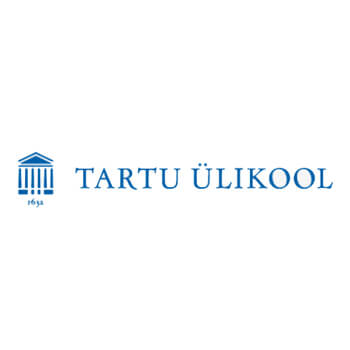
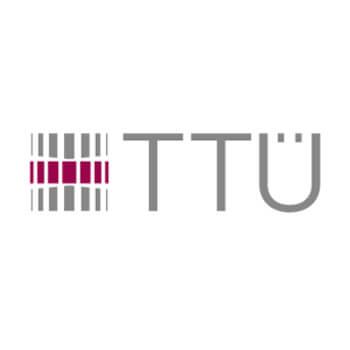
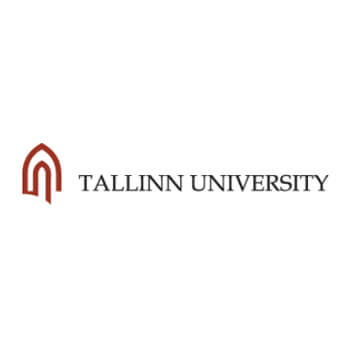


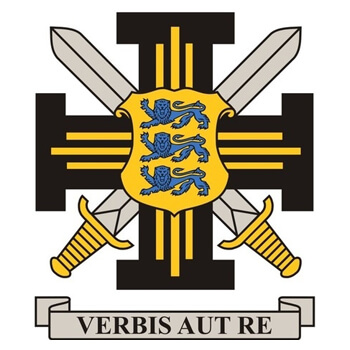
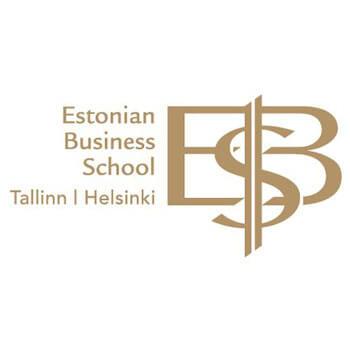
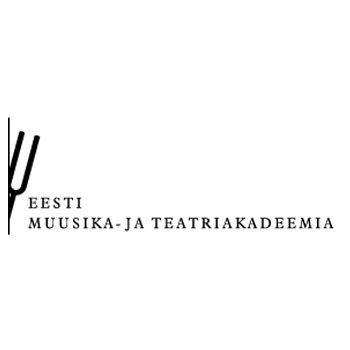










Leave a Reply